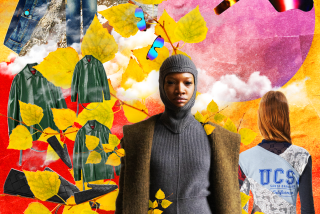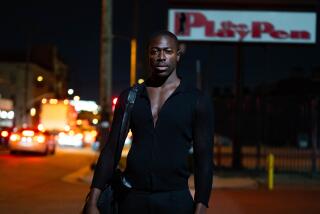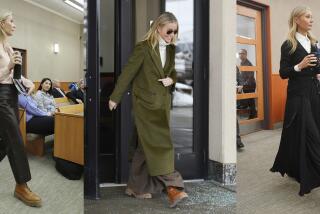City Slickers Buy Into Country Look Without the Life : Fashion: ‘Urban rustic’ thrives as the young and hip trek streets in pricey hiking boots, ‘sport utility vehicles.’
- Share via
NEW YORK — Quilts. Flannels. Jeeps. If it smacks of the country, it’s chic.
Hungering for comfort and simplicity, Americans are reveling in things rural.
They’re trekking up mountains--or down Madison Avenue--in fancy hiking boots. They’re splashing houses and apartments with gingham, baskets and, as Christmas nears, garlands and gingerbread houses.
Ask Kurt Abrams, who oohs and ahs about his new Ford Explorer, the best-seller among the “sport utility vehicles” that constitute the fastest-growing segment of the domestic auto market for several years.
No matter that he’s a New Yorker, born and bred. With such a car, the country beckons.
“I’m starting to contemplate taking my kids camping,” says Abrams, a father of two who works for a pharmaceutical company. “I didn’t think about it before. I’m trying to figure out things to do with the vehicle.”
Of course, not everyone gets the gear first and then wonders what to use it for. Many people are rock climbing, hiking, hunting or quilting. But the numbers of Americans buying into the country look without the life shows the strength of the pastoral allure.
“You talk about wanting to live this country life,” says Peter L. Horn II, manager of Beretta Galleries, a New York boutique opened by the Italian gun company in June to sell tweedy hunting and “apres hunting” clothes, along with $100,000 handmade guns. “People come in here just to buy clothes for the weekend. It has nothing to do with hunting.”
Whatever happened to the glitz, the glamour, the sparkle of city things to covet and emulate?
After the ostentatious ‘80s, Americans seem to be clamoring for a warm, homey, outdoorsy look. No matter that it can cost as much as sleek chic did in the last decade--it evokes down-home goodness.
“There’s a longing for a return at least symbolically to quality, to people who can be trusted, concepts that can be believed, products that will prove to be of value,” says John Mack Carter, president of Hearst Magazine Enterprises and creator of Country Living, the most popular of the dozen or so magazines of the genre published today.
For the more urban or the young and hip, a streamlined country look offers less traditional furnishings.
“Sun-faded, soft colors, weathered furniture and fabric--Provencal would come to mind,” Barbara Turf, chief buyer for Crate and Barrel, says of the style that the Northbrook, Ill., chain will push for a second year.
In clothing, too, Americans are choosing the woodsman or farmer look. Whether they have any desire to hike or hoe is irrelevant.
“Urban Rustic--as in a plaid jacket that might at first look like a lumberjack’s--then you catch the refinements,” coos the fall J. Crew clothing catalog in touting a $168 woman’s wool jacket.
In the J. Crew world, pale women stand sternly beside stubbly bearded men in old pickups or fields. All sport flannel, corduroy and plaids.
Valerie Steele, an author and professor of fashion history at the Fashion Institute of Technology in New York, says this style, which is defying the sales doldrums suffered elsewhere in the retail world, tap into an American prejudice against fashion. “People perceive these clothes as being not fashion but real clothes,” she said.
Sales of Timberland boots and clothes more than doubled to $637 million last year. Many wearers aren’t tackling mountains in them.
“We’re seeing a lot of people buying our very technical hiking boots and using them to hike Madison Avenue,” says spokesman Roger Rydell, referring to a line of footwear that costs $150 to $200.
How long before crystal, silk and brocade come back in vogue?
“We always go through these cycles,” said Christopher Cedergren, senior vice president of Autopacific Inc., a market research group.
More to Read
Sign up for The Wild
We’ll help you find the best places to hike, bike and run, as well as the perfect silent spots for meditation and yoga.
You may occasionally receive promotional content from the Los Angeles Times.






